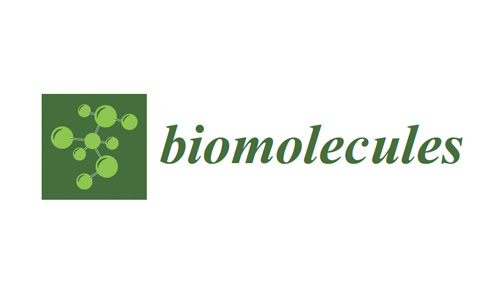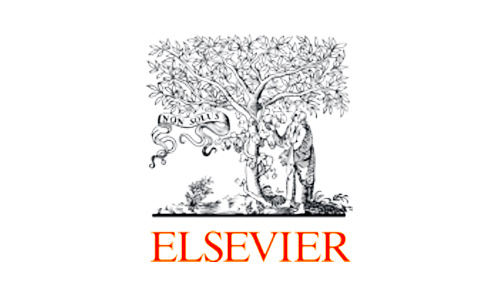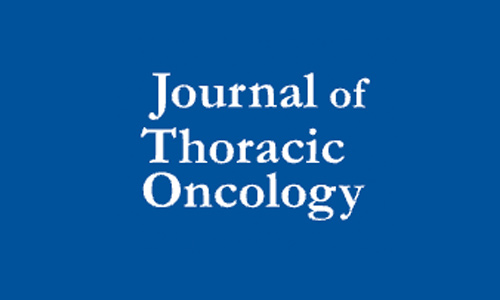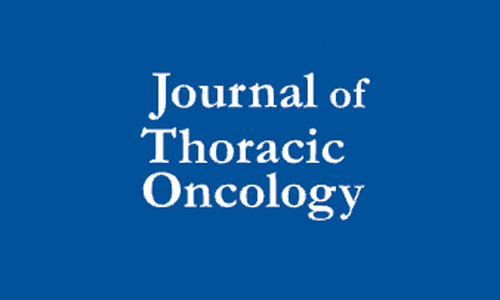- Follow Us
Scientific Publications
High-profile publications featuring CDI Labs next-gen proteomics technologies and services
354 Total Publications
Refine Your Search
Publication Details
- Date
- Link
- + Abstract

Frontiers in Immunology
- Main Product: HuProt
- HuProt: Diagnostic value of anti-Kaiso autoantibody in axial spondyloarthritis
- Xinzhe Feng, Wenwen Tong, Jia Li, Yihong Xu, Shanbang Zhu, Weidong Xu
- Dept of Joint Bone Disease Surgery, Changhai Hospital
Objective: Axial spondyloarthritis (axSpA) is a chronic rheumatic disease predominantly characterized by inflammation and progressive structural damage. Patients are often diagnosed very late, which delays the optimal treatment period. Early diagnosis of axSpA, especially non-radiographic axSpA (nr-axSpA), remains a major challenge. This study aimed to investigate the diagnostic value of anti-Kaiso autoantibodies in axSpA and their correlation with clinical disease indicators.

Biomolecules - MDPI
- Main Product: HuProt
- HuProt: Recent Progress in Development and Application of DNA, Protein, Peptide, Glycan, Antibody, and Aptamer Microarrays
- G. M. Aparna and Kishore K. R. Tetala
- Centre for Bioseparation Technology (CBST), Vellore Institute of Technology
HuProt Review: Microarrays are one of the trailblazing technologies of the last two decades and have displayed their importance in all the associated fields of biology. They are widely explored to screen, identify, and gain insights on the characteristics traits of biomolecules (individually or in complex solutions). A wide variety of biomolecule-based microarrays (DNA microarrays, protein microarrays, glycan microarrays, antibody microarrays, peptide microarrays, and aptamer microarrays) are either commercially available or fabricated in-house by researchers to explore diverse substrates, surface coating, immobilization techniques, and detection strategies.

Frontier in Oncology
- Main Product: HuProt
- HuProt: Use of phage display biopanning as a tool to design CAR-T cells against glioma stem cells
- Marine Potez, James K. C. Liu, et. al.
- Neurosurgical Oncology, Department of Neuro-Oncology, H. Lee Moffitt Cancer Center and Research Institute
HuProt PPI: Glioblastoma (GBM) is both the most common and aggressive type of primary brain tumor, associated with high mortality rates and resistance to conventional therapy. Despite recent advancements in knowledge and molecular profiling, recurrence of GBM is nearly inevitable. This recurrence has been attributed to the presence of glioma stem cells (GSCs), a small fraction of cells resistant to standard-of-care treatments and capable of self-renewal and tumor initiation. Therefore, targeting these cancer stem cells will allow for the development of more effective therapeutic strategies against GBM. We have previously identified several 7-amino acid length peptides which specifically target GSCs through in vitro and in vivo phage display biopanning.

Nature Communications
- Main Product: HuProt
- Affinity maturation generates pathogenic antibodies with dual reactivity to DNase1L3 and dsDNA in systemic lupus erythematosus
- Eduardo Gomez-Bañuelos, Felipe Andrade, et. al.
- Johns Hopkins Medicine, Division of Rheumatology
HuProt Antibody Specificity: Anti-dsDNA antibodies are pathogenically heterogeneous, implying distinct origins and antigenic properties. Unexpectedly, during the clinical and molecular characterization of autoantibodies to the endonuclease DNase1L3 in patients with systemic lupus erythematosus (SLE), we identified a subset of neutralizing anti-DNase1L3 antibodies previously catalogued as anti-dsDNA. Based on their variable heavy-chain (VH) gene usage, these antibodies can be divided in two groups. One group is encoded by the inherently autoreactive VH4-34 gene segment, derives from anti-DNase1L3 germline-encoded precursors, and gains cross-reactivity to dsDNA – and some additionally to cardiolipin – following somatic hypermutation.

Wiley: Statistics in Medicine
- Main Product: HuProt
- A Bayesian hierarchical model for signal extraction from protein microarrays
- Sophie Bérubé, Tamaki Kobayashi, Amy Wesolowski, Douglas E. Norris, Ingo Ruczinski, William J. Moss, Thomas A. Louis
- National Institute of Allergy and Infectious Diseases
Protein microarrays are a promising technology that measure protein levels in serum or plasma samples. Due to their high technical variability and high variation in protein levels across serum samples in any population, directly answering biological questions of interest using protein microarray measurements is challenging. Analyzing preprocessed data and within-sample ranks of protein levels can mitigate the impact of between-sample variation. As for any analysis, ranks are sensitive to preprocessing, but loss function based ranks that accommodate major structural relations and components of uncertainty are very effective.

Elsevier: Translational Autoimmunity
- Main Product: HuProt
- Autoantibody profiling in autoimmune rheumatic diseases: How research may translate into clinical practice
- Nicola Bizzaro, Luigi Cinquanta, Renato Tozzoli
- Laboratory of Clinical Pathology, San Antonio Hospital, Tolmezzo
A characteristic feature of autoimmune diseases is the presence of multiple antibodies. Antibody profiling can be advantageous for the early diagnosis and for a more precise classification of autoimmune diseases, for prognostic evaluation, and for disease prediction in asymptomatic subjects. Systems using micronized components (protein chips or arrays) capable of simultaneously detecting many autoantibodies at the same time are particularly suitable for testing autoantibody profiles.

Journal of Thoracic Oncology
- Main Product: HuProt
- HuProt: Induction of Tertiary Lymphoid Structures in Non-Small Cell Lung Cancer Improves B and T Cell Anti-Tumor Immunity
- H. Mi Kim, D. Liu, A. Ruffin, A. McDonough, C. Lampenfeld, S. Kunning, A. Somasundaram, L. Stabile, T. Bruno
- University Of Pittsburgh, UPMC Hillman Cancer Center, Dept of Immunology
Tertiary lymphoid structures (TLS) are lymphoid aggregates that often form locally in tissues with chronic infection, autoimmune disease, and cancer. As such, TLS correlate with favorable prognosis in patients with solid tumors, including non-small-cell lung cancer (NSCLC). Further, TLS have recently been associated with superior response to immune checkpoint blockade (ICB). B cells are predominantly located within TLS and correlate with improved survival and ICB response. Despite the therapeutic promise of B cells and TLS, they have not been investigated as immunotherapeutic targets. Moreover, a mechanistic understanding of TLS formation and function in cancer is lacking.

Journal of Thoracic Oncology
- Main Product: HuProt
- HuProt: Serum Autoantibodies may help Identify Individuals with Actionable Pulmonary Nodules on LDCT Scan
- C. Auger, H. Moudgalya, P. Shah, M. Liptay, C. Seder, J. Borgia
- Rush University Medical Center
HuProt Autoantibodies: Blood-based biomarkers can serve as a simple and cost-effective method, when used in conjunction with USPSTF guidelines, for selecting LDCT screening. Due to B-cell amplification, autoantibodies are found at a higher concentration in blood than their corresponding neoantigens, making them potentially valuable as early detection biomarkers. We hypothesize, circulating autoantibody targets can be utilized for ‘pre-screening’ individuals for LDCT testing.

Journal of Thoracic Oncology
- Main Product: HuProt
- HuProt: Induction of Tertiary Lymphoid Structures in Non-Small Cell Lung Cancer Improves B and T Cell Anti-Tumor Immunity
- H. Mi Kim, D. Liu, A. Ruffin, A. McDonough, C. Lampenfeld, S. Kunning, A. Somasundaram, L. Stabile T. Bruno
- University Of Pittsburgh, UPMC Hillman Cancer Center, Dept of Immunology
Tertiary lymphoid structures (TLS) are lymphoid aggregates that often form locally in tissues with chronic infection, autoimmune disease, and cancer. As such, TLS correlate with favorable prognosis in patients with solid tumors, including non-small-cell lung cancer (NSCLC). Further, TLS have recently been associated with superior response to immune checkpoint blockade (ICB). B cells are predominantly located within TLS and correlate with improved survival and ICB response. Despite the therapeutic promise of B cells and TLS, they have not been investigated as immunotherapeutic targets. Moreover, a mechanistic understanding of TLS formation and function in cancer is lacking.

Autophagy
- Main Product: HuProt
- HuProt: Endolysosomal impairment by binding of amyloid beta or MAPT/Tau to V-ATPase and rescue via the HYAL-CD44 axis in Alzheimer disease
- Seo-Hyun Kim, Yong-Keun Jung, et. al.
- School of Biological Sciences, Seoul National University
HuProt Enzyme: Impaired activities and abnormally enlarged structures of endolysosomes are frequently observed in Alzheimer disease (AD) brains. However, little is known about whether and how endolysosomal dysregulation is triggered and associated with AD. Here, we show that vacuolar ATPase (V-ATPase) is a hub that mediates proteopathy of oligomeric amyloid beta (Aβ) and hyperphosphorylated MAPT/Tau (p-MAPT/Tau). Endolysosomal integrity was largely destroyed in Aβ-overloaded or p-MAPT/Tau-positive neurons in culture and AD brains, which was a necessary step for triggering neurotoxicity, and treatments with acidic nanoparticles or endocytosis inhibitors rescued the endolysosomal impairment and neurotoxicity.